The Museum Collections
Introduction
I. History and Art Collection
1. Icons of the 14th – 19th centuries
icons of the 14th – 17th century
2. Jewelry art of the 14th – 20th century
jewelry art of the 14th – 17th century
jewelry art of the 18th – 19th century
the european silver 14th - 19th centuries
3. Small-size sculptures (works of metal, wood, bone)
XI – the beginning of the XX century
Small-size sculptures 11th – 17th century
Small-size sculptures 18th – early 20th century
enamel of Troitza masters 15-8th – early 20th century
5.Embroidery, lace, textiles of the 14th - early 20th century
icon and ornamental embroidery
gold and silver lace
6.Painting of the 18th – 21st centuries
painting of the 18th – 19th centuris
painting of the 20th – 21st centuris
II.Manuscripts and old printed books of the 14th – 17th century
IV.Lithography of the 18th – 19th century
V.Numismatics
VI.Medals of the 18th - early 20th century
VIII.Archeology collection
IX. Russian folk and applied and decorative art of the 17th – 21st c.
1. Artistic wood
folk carved and painted wood
wooden toys
house carving of Sergiev Posad
Khokhloma and Gorodets painting
2. Artistic textiles
embroidery and weaving
printed textiles and lace
Russian shawls
folk costumes
folk garments
printed cotton kerchiefs
|
Sergiev Posad architectural carving of 19th- the beginnings of 20th centuries (p. 1) |
The collection of the wooden architectural carving of Sergiev Posad 19th - begining 20th centuries occupies in Sergiev-Posad Museum-Preserve rather small place. It has been collected in 1970 - 1990 years by L.A.Kuvshinnikova V.M.Zhiguleva, S.V.Gorozhanina in connection with reconstruction of an old city and totals hardly more than 200 subjects.
Among them are window and room platbands, ledge and under window boards, pilasters, capitals, balcony and ladder lattices, a pediment, canopies over the entrance door, separate fragments of a carving. The important addition of the collection of original products are photos made to the exhibitions arranged with the author of these lines, at first in five halls of Hospital chambers of the 17th c. in the Trinity St.-Sergius Lavra (1982-1983) (Fig. 18,19), then - in the Pyatnitsky church of the 17th c. of the Pyatnitsky dale monastery (1988-1990th).
These exhibitions have acquainted for the first time townsmen, and also all fans of a folk art with local tradition of one of the most ancient kinds of national art creativity. The products of local handicraftsmen executed at high professional and art level, found a stable demand, therefore, as a rule, for construction of new houses, no less than for their ornament were invited carpenter artels from neighbouring villages and the next provinces. So, according to the old residents, separate houses on Mitkina-street (former Nizhnaya), to the Beryozovsky lane, etc. was built by carpenters led by I. M.Romanov from Berendeev town of Yaroslavl region. There are data on work in Sergievsky Posad of the considered period masters from the Yaroslavl, Vladimir provinces, Bryansk, Egoryevsk, Bogorodsk and Buzhanino villages.
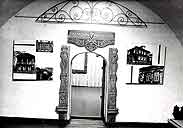
Fig. 18. 1st hall of an exhibition the Architectural carving of Sergiev Posad, 1982. |
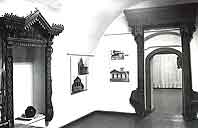
Fig. 19. 5th hall of an exhibition the Architectural carving of Sergiev Posad, 1982.
|
The property stratification of inhabitants of Sergiev Posad of 19th- beginning of 20th centuries was considerable, that has found the reflexion in the character of building. Rich houses of representatives of the city authorities, owners of small workshops and benches, buyers of a toy, local intelligences settled down on entrances to Monastery. Monastic servants and the handicraftsmen who were taking places in large villages on professional characteristics were built their houses further. Needy townsmen, which inhabited constructions, almost had no carved furniture, lodged on suburbs.
Contemporary records about inhabited buildings of the city, which have kept exact dating, the oral data collected during household inspections, testify that the earliest dwellings of Sergievsky Posad with a rich architectural decor attribute to the middle of 19th century. By this time, obviously, it is possible to carry a platband rented from houses under the prospect of Krasnaya (Red) Army (former The Moscow street), settling down near the House of handicraftsman. In its magnificent decoration is felt influence of architectural style of the last century - Russian baroque. Ancient national mythological images - fantastic dragons and sirins, cosy settled down in an interlacing of branches with flowers and leaves have found reflexion here. Carved fragments of this platband are cut on a contour, finished by a cutter and imposed on a surface of a background board. Thus, the technique of its execution, which have received the name of an unprofitable carving, is transitive from a relief which is carried out on a thick board, to more simple work with saw through way.
|
Composite construction and treatment of separate elements of an architectural decor of the apartment house which has been taken down in connection with reconstruction of the prospectus in 1973 strongly attracts to traditions of Russian baroque. The building is dated the middle of 19th century and belonged to lumberman I.I.Kazakov. Its ground floor, laid out from a brick and serving by a bench, is solved with extreme simplicity. But the top, inhabited floor with seven windows on a facade had the richest carved ornamentation. (Fig. 2)
It is necessary to notice that in 20th years of 19th century special projects of apartment houses which, however, almost have not found the application have been developed for various categories of the population of the city. Well-to-do inhabitants preferred to build dwellings under individual projects, that more corresponding their own tastes and aesthetic requirements.
Îne of invariable examples for imitation, obviously, was architectural decor of the house of Kazakov. On the 1st Udarnoy Army street (further Bolshaya Kukuevskaya) until recently there was a two-storey building with a brand of an insurance society of 1846. Its bottom premises served the notions workshop producing buttons, above there lived owners - Telitsyns. As well as many other things in Sergievsky Posad, this house had a skylight leaving on the front side. The carinate form of its pediment was underlined openwork valances, cheeks are solved in the form of capitals with a thin unprofitable pattern.
Platbands of the house of Telitsyn created under obvious influence of the Kazakov’s house, have undergone certain changes. Techniques of execution of a carving is unequal; on the Kazakov’s house the volume carving is combined with unprofitable and openwork, on the Telitzin’s house the unprofitable and openwork carving executed in the saw through way is applied only.
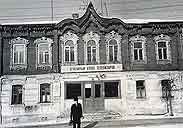
Fig. 2. I.I.Kazakova's house. 2nd half of 19th century |
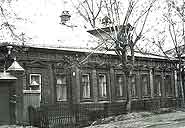
Fig. 3. The house. The beginning of 19th century. 1st Udarnoy Army street (further Bolshaya Kukuevskaya) |
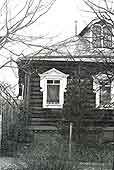
Fig. 4. The house. The beginning of 20th century. Klementevskaay street
|
Variety of residential buildings of 19th century built in traditions of Russian classicism. One of them is on the1st 1st Udarnoy Army street (further Bolshaya Kukuevskaay) and differs clearness of a design, severity of forms of architectural ornamentation.
However such rather close imitations classicism was a little. More often the national master took the general distribution of the weights, defining the decision of a building or its part, ornamental motives of this style for a basis, but in treatment of many elements brought own understanding going from ancient samples and that of a folk art (Fig. 3,4)
|
|
|


